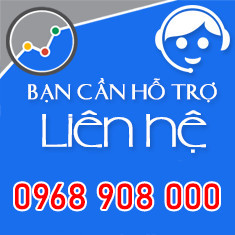-
03-14-2025, 03:09 PM #1
 Silver member
Silver member
- Ngày tham gia
- Nov 2019
- Bài viết
- 1,329
Summer in Vietnam: The Best Beaches and Island Getaways
Dining in Vietnam is not just about great food—it’s about unique experiences. One of the most exciting ways to enjoy a meal is at a floating restaurant. In Halong Bay, travelers can dine on fresh seafood while floating between towering limestone karsts. The Mekong Delta offers traditional riverfront eateries where guests can enjoy fish straight from the water. In Ho Chi Minh City, the Bonsai Cruise provides a luxury dining experience as guests sail along the Saigon River. Whether enjoying a simple grilled fish on a wooden boat or a gourmet meal on a luxury cruise, floating restaurants add an unforgettable element to any Vietnam trip.
While famous places like Hanoi, Halong Bay, and Ho Chi Minh City attract most visitors, Vietnam also boasts lesser-known destinations that offer incredible experiences. Ha Giang, in northern Vietnam, is a dream for motorbike enthusiasts, with winding roads through dramatic limestone mountains and rice terraces. The island of Ly Son, off the coast of Quang Ngai, is a volcanic island known for its untouched beauty and fresh seafood. In the Mekong Delta, An Giang province offers a different experience with its floating villages and vast lotus fields. Another hidden gem is the Pu Luong Nature Reserve, a serene retreat filled with terraced rice paddies and traditional Thai ethnic minority villages.
Vietnam is a fantastic destination for adventure enthusiasts, offering a wide range of thrilling outdoor activities. In Da Lat, canyoning is a popular sport, allowing visitors to rappel down waterfalls, jump into natural pools, and navigate through jungle terrain. For water sports lovers, Mui Ne is a hotspot for kite surfing, thanks to its strong winds and vast sandy beaches. Scuba diving and snorkeling in Nha Trang and Phu Quoc reveal vibrant coral reefs teeming with marine life. In the mountainous north, rock climbing in Cat Ba Island offers breathtaking views of Halong Bay’s limestone cliffs. Whether you seek adrenaline-pumping adventures or gentle outdoor activities, Vietnam has something for every thrill-seeker.
Vietnam is home to over 50 ethnic minority groups, each with its own distinct traditions and customs. One of the best ways to experience their unique cultures is by visiting local markets in remote regions. The Bac Ha Market in northern Vietnam is one of the most vibrant, where H’mong, Tay, and Dao people gather in colorful traditional clothing to trade goods, livestock, and textiles. The Sunday market in Sapa also offers an authentic cultural experience, showcasing handcrafted goods and local delicacies. In the Central Highlands, Kon Tum’s markets provide insight into the traditions of the Bahnar and Sedang people. These markets are more than just places to shop—they are cultural hubs where communities come together to socialize and celebrate their heritage.
Hue, the former imperial capital of Vietnam, is a city steeped in history, tradition, and breathtaking architecture. The Hue Imperial Citadel, a UNESCO-listed site, offers a glimpse into the grandeur of Vietnam’s Nguyen Dynasty, with its vast courtyards, ornate temples, and royal residences. Beyond the citadel, visitors can explore the Thien Mu Pagoda, a seven-story Buddhist temple overlooking the Perfume River. Hue is also home to several majestic royal tombs, including the Tomb of Khai Dinh and the Tomb of Minh Mang, showcasing intricate architecture and beautiful landscapes. One of Hue’s unique cultural experiences is its royal cuisine, featuring elaborate dishes once served to emperors, such as bánh khoái (crispy pancake) and cơm hến (clam rice). Taking a boat ride along the Perfume River at sunset is the perfect way to end a day of exploration in this historic city.
- How to Travel to Vietnam from India/ Travel to Vietnam
- Top 10 best things to do in Ninh Binh / Ninh Binh tours
View more random threads:
- Điểm danh hàng loạt lợi ích nhận được từ việc chơi game
- Cơ sở chuyên cắt mí danh tiếng ở Quảng Ngãi
- (Boy) nỗi lo khi bước vào nghê
- Cung cấp thuốc ngựa thái cho bạn trai sức bền dẻo dai trong tình dục
- Luật bù trừ!!!!!!!!!!!
- Nguồn MeanWell 5V: Sự Lựa Chọn Đáng Tin Cậy cho Nguồn Cung Cấp Điện 5V
- Create a Cozy Haven with a Grass Bed for Your Rabbits
- Vai trò quan trọng của xổ số kiến thiết trong cộng đồng
- Biệt thự hiện đại thoáng sáng nhờ thiết kế kín mặt trước, hở mặt sau
- Phút tĩnh lặng



 Trả lời kèm Trích dẫn
Trả lời kèm Trích dẫn





Cá hồi Theo thầy thuốc Hồng Gấm, cá hồi nổi danh vì giàu acid béo omega-3 tốt cho sức khỏe tim mạch và đời sống chăn gối. Bên cạnh cá hồi thì cá mòi, cá ngừ, cá bơn… cũng giúp đời sống tình dục sung...
3 loại đạm giúp nam giới khỏe – sai cách ăn là mất tác dụng!